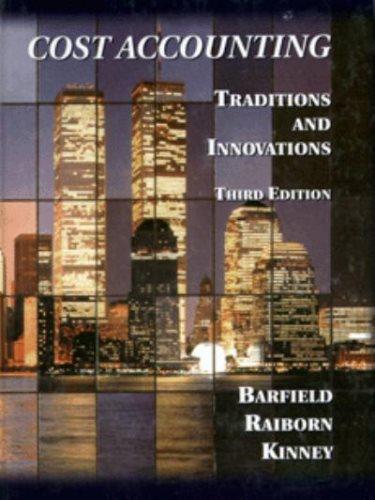In 1993, the U.S. Congress passed the Family and Medical Leave Act. This act requires employers to
Question:
In 1993, the U.S. Congress passed the Family and Medical Leave Act. This act requires employers to allow workers to take up to 12 weeks per year of unpaid, job-protected leave. Leave can be taken only for specified reasons such as to care for a newborn child or ailing spouse, or for personal health reasons.
Employees are eligible for leave if they've worked for an employer for at least one year, and for 1,250 hours over the previous 12 months, and if there are at least 50 e?nployees working for their employer within a 15-mile radius of the work site.
Libby Sartain, a Southwest Airlines vice president and a member of the Society for Human Resource Management, said some employees have used the law's provisions to avoid working overtime. Others apply for pregnancy leave under the act and take off time for morning sickness.
uOften, it seems we are running a (Family Medical Leave Act) processing business instead of an airline, ” Sartain said.
But because the major reason for family leave is childbirth, people like Christie Se?is, who has had two babies in the past three years, think the law is a blessing.
Her latest baby arrived a month early last February, and she developed a blood clot in her leg. Family leave allowed her to recuperate in the hospital without worrying about losing her school- teaching job.
Ethics and Quality Discussion
[SOURCE: Knight-Ridder Newspapers, “Family Leave’s Cost,” Akron Beacon Journal (May 2, 1996), pp. Al, A4. Reprinted by permission: Tribune Media Servicesd
a. With regard to controlling the quality of organizational output, what would be the greatest concerns you would have as a manager in dealing with the Family Medical Leave Act?
b. How could compliance with terms of this act positively affect the quality of work in an organization?
c. What are the ethical obligations of employees in requesting leave under the authority of this act?
36.One of the most prominent trends in business today is to outsource noncore functions. It requires little analysis to determine that outsourcing equates to loss of jobs for workers who formerly executed activities associated with the out¬ sourced function. With this fact in mind, it is not difficult to understand that outsourcing is often an issue of contention between managers and workers.
In no American business is outsourcing likely to be more hotly debated than at General Motors. Compared to its North American rivals, Ford and Chrysler, General Motors currently outsources a far smaller percentage of its required components. To illustrate, General Motors presently outsources about 30 percent of its required parts. This compares to 50 percent for Ford and 70 percent for Chrysler.
Ford and Chrysler were never as vertically integrated as GM, and they moved more quickly in the 1980s to spin off or abandon parts businesses that couldn’t compete on the basis of cost with outside suppliers. GM now finds itself in a very difficult dilemma. On the one hand, the company needs to discontinue many noncore functions to become more cost competitive. On the other hand, its unionized labor force is poised to resist these efforts to protect its jobs. GM will soon begin negotiations with United Auto Workers to structure its future labor contracts.
[SOURCE: Adapted from Rebecca Blumenstein, Nichole M. Christian, and Gabriella Stern, “GM to Break With Peers in UAW Talks (Auto Maker Ready to Risk Another Strike on Cost Issue),” Wall Street Journal (April 26, 1996), pp. A2, A4. Reprinted by permission of The Wall Street Journal, © 1996 Dow Jones & Company, Inc. All Rights Reserved Worldwide.]
a. As a GM executive negotiating with the UAW, how would you seek to struc¬ ture the labor contract with the UAW?
b. In your opinion, is greater reliance on outsourcing by GM in the long-term best interests of UAW members working for GM?
c. What ethical responsibility do firms such as GM bear to the employees who are displaced by outsourcing?
LO2
Step by Step Answer:

Cost Accounting Traditions And Innovations
ISBN: 9780538880473
3rd Edition
Authors: Jesse T. Barfield, Cecily A. Raiborn, Michael R. Kinney





